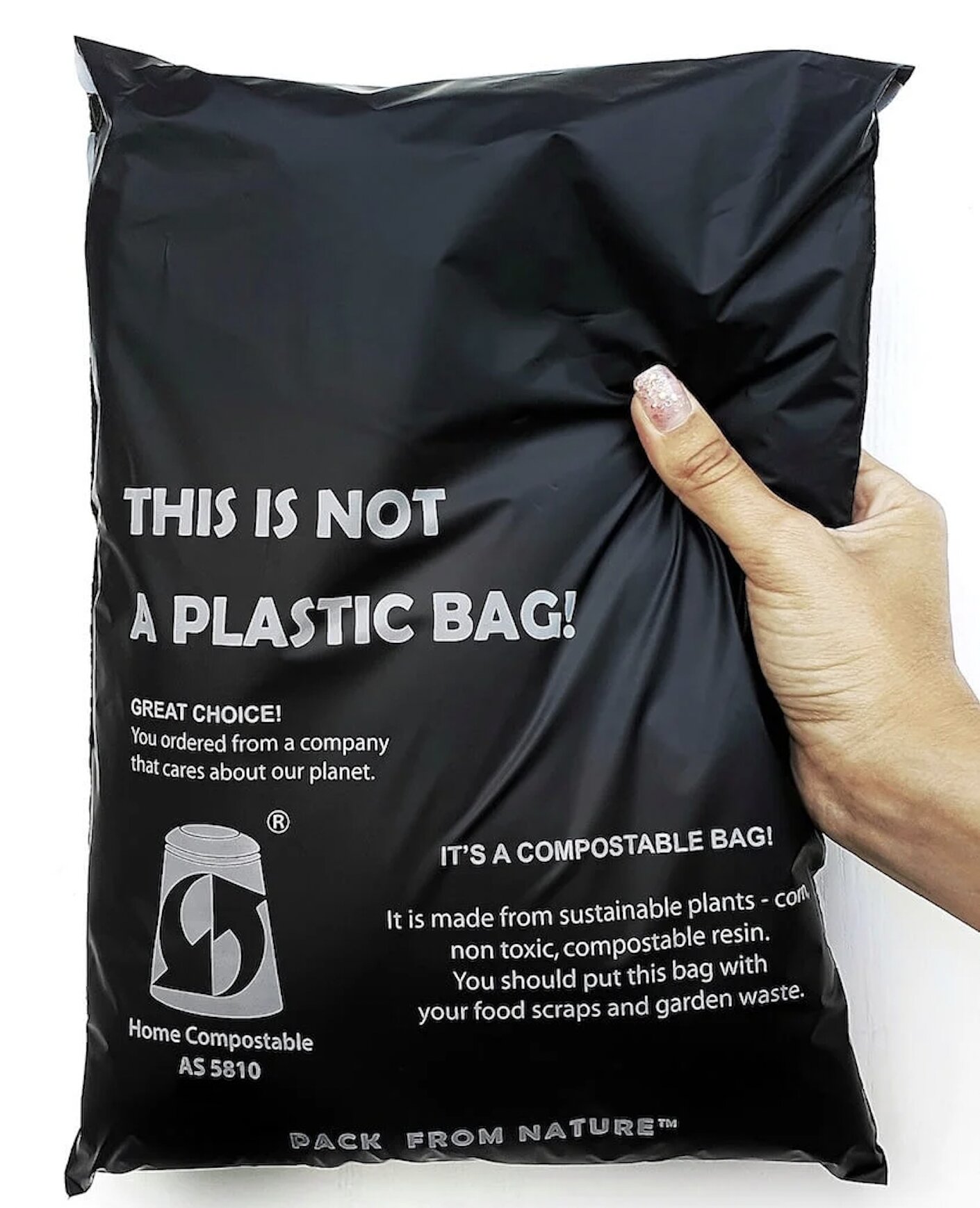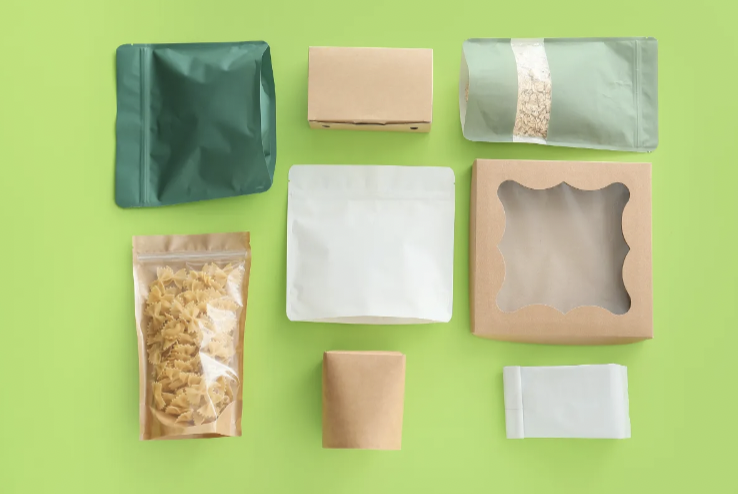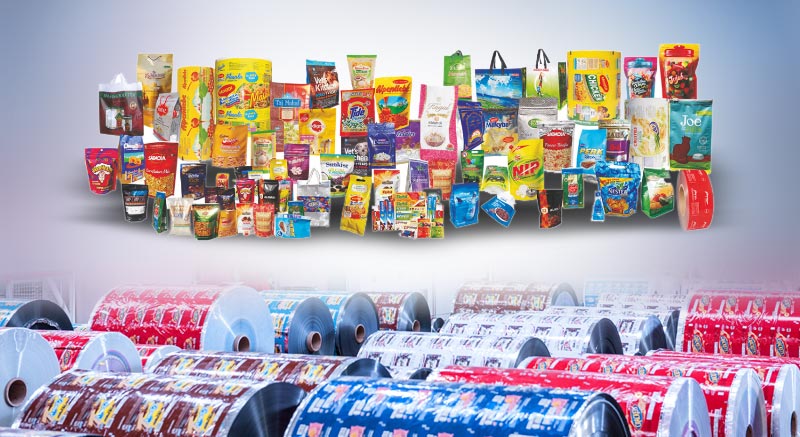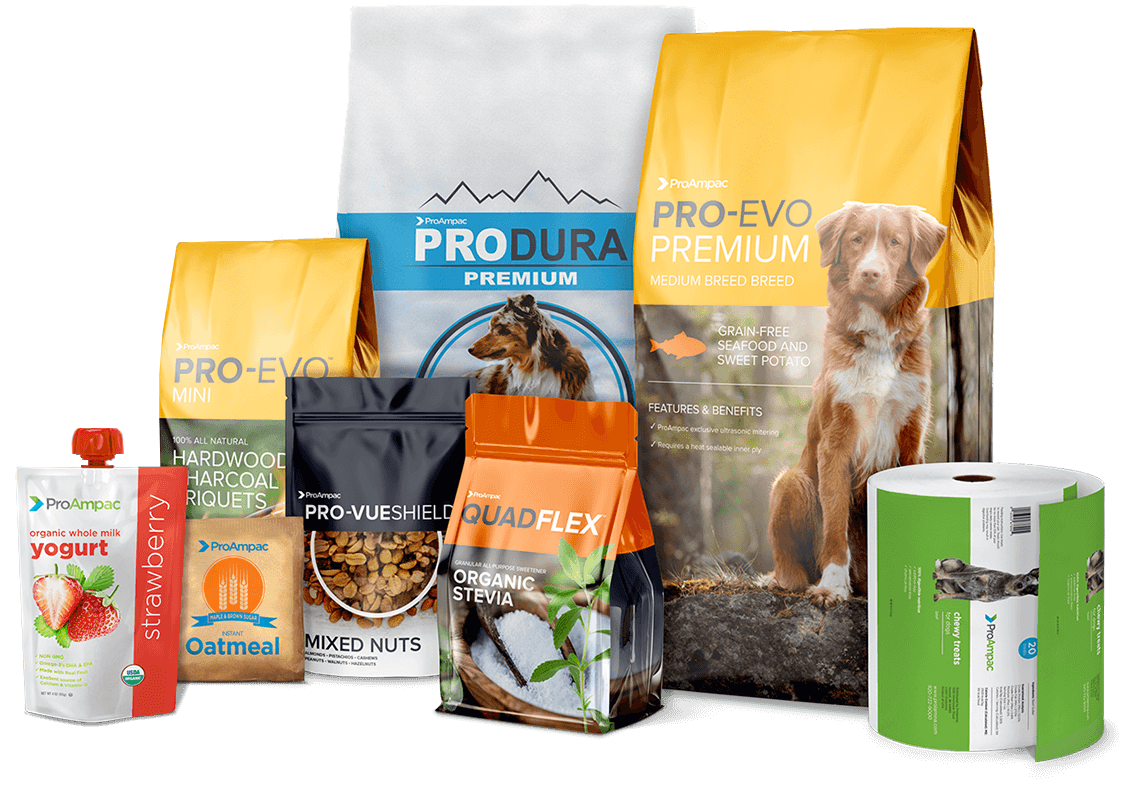In a world increasingly aware of environmental impact, choosing the right package is more critical than ever. This article delves into the world of eco-friendly packaging, exploring why it’s not just a trend but a vital business strategy. We’ll uncover different sustainable packaging materials, their benefits, and how you, like my valued client Mark Thompson from the USA, can make informed decisions that enhance your brand, reduce your carbon footprint, and appeal to eco-conscious consumers. If you’re looking for practical packaging solutions that are both effective and environmentally sound, you’re in the right place. As a factory owner, Allen, specializing in flexible packaging solutions for clients worldwide, I’ve seen firsthand the shift towards sustainability and am here to share my insights.
1. What Exactly is Eco-Friendly Packaging and Why is it Crucial Today?
Eco-friendly packaging refers to packaging that is designed to minimize its environmental impact throughout its lifecycle – from sourcing raw materials, production, transportation, usage, and ultimately, to its disposal. This often means it’s made from recycled materials, is recyclable, biodegradable, or compostable. The goal is to reduce waste, conserve natural resources, and lessen pollution. Think of it as a package designed with Mother Earth in mind.
In today’s world, the urgency for eco-friendly packaging cannot be overstated. We’re facing significant environmental challenges, from overflowing landfills to plastic packaging polluting our oceans. Consumers are more informed and concerned than ever before; according to a 2021 study by Trivium Packaging, 73% of consumers are willing to pay more for sustainable packaging. This shift in consumer sentiment directly impacts purchasing decisions and brand loyalty. For businesses like yours, Mark, adopting sustainable packaging solutions isn’t just an ethical choice; it’s becoming a market imperative. It’s about showing your customers that your brand cares and is taking tangible steps towards a greener future. This often involves a deep dive into your supply chain to ensure every step is considered for its environmental impact.

2. How Can Sustainable Packaging Benefit Your Brand and Bottom Line?
Switching to sustainable packaging offers a multitude of benefits that extend far beyond just environmental responsibility. Firstly, it significantly enhances your brand image. Consumers increasingly prefer brands that demonstrate a commitment to sustainability. An eco-friendly package can be a powerful marketing tool, differentiating you from competitors and fostering a positive perception among your target audience. This can translate directly into increased customer loyalty and acquisition. Imagine the unboxing experience amplified by the knowledge that the package itself is part of a responsible solution.
Secondly, while there might be an initial perception of higher costs, eco-friendly packaging solutions can often be cost-effective in the long run. Innovations in new materials and manufacturing processes are making sustainable options more accessible. Lighter materials can reduce shipping costs, and optimized designs can minimize material usage. Moreover, some governments offer incentives for businesses adopting green practices. By choosing the right packaging, you can also reduce waste disposal fees. From my experience working with various brands, the return on investment from improved brand reputation and customer loyalty often outweighs any marginal increase in packaging material costs. It’s a forward-thinking approach that considers the triple bottom line: people, planet, and profit.
3. What are the Different Types of Eco-Friendly Packaging Materials Available for Your Package?
The world of eco-friendly packaging materials is diverse and constantly evolving. Here are some common categories to consider for your package:
- Recycled Materials: This is a cornerstone of eco-friendly packaging.
- Recycled Paper and Cardboard (Corrugate): Widely used for box manufacturing, mailers, and inserts. Recycled paper packaging reduces the need to harvest virgin timber and typically requires less energy and water to produce. Options range from kraft paper to more refined finishes.
- Recycled Plastics (e.g., rPET): Using post-consumer recycled plastics helps divert waste from landfill and reduces reliance on virgin plastic production. This is common in beverage bottles and some types of flexible pouch packaging.
- Biodegradable Materials: These materials are designed to break down naturally into elements like water, carbon dioxide, and biomass when exposed to microorganisms.
- Cornstarch Packaging: A plant-based plastic alternative made from polylactic acid (PLA), derived from fermented plant starch. It’s often used for food containers, cutlery, and loose-fill filler.
- Mushroom Packaging (Mycelium): Made from agricultural waste fused together by mushroom roots, it’s a compostable and protective packaging material, often used as an alternative to styrofoam.
- Seaweed Packaging: An emerging innovation, seaweed-based materials are biodegradable and can be used for films and pouches.
- Compostable Materials: These materials break down completely into nutrient-rich compost under specific composting conditions (either home compostable or industrial).
- PLA (Polylactic Acid): As mentioned above, PLA can be certified compostable under industrial composting conditions.
- Cellulose-based films (e.g., Glassine): Glassine is a smooth, glossy paper that is air, water, and grease resistant. It’s biodegradable and recyclable. Some flexible films are now made from wood pulp and are compostable.
- Wheat Straw Packaging: Made from reclaimed wheat straw, this packaging material is an excellent alternative to tree-based paper products and is often compostable.
Choosing the right eco-friendly packaging depends on your product’s needs, your brand‘s sustainability goals, and the disposal infrastructure available to your end-users. It’s crucial to select high-quality materials that don’t compromise product integrity.
4. Biodegradable vs. Compostable Packaging: What’s the Real Difference for Your Package and How Does it Relate to Waste Management?
The terms "biodegradable" and "compostable" are often used interchangeably, but they have distinct meanings, especially concerning your package and waste management. Understanding this difference is key to making truly eco-friendly packaging choices.
Biodegradable packaging means the packaging material can be broken down by microorganisms (like bacteria or fungi) over time. However, the term itself doesn’t specify how long it will take or what it will break down into. Some biodegradable plastics might break down into smaller pieces of plastic (microplastics) or require very specific conditions not found in a typical landfill or natural environment. This lack of specificity can sometimes be misleading.
Compostable packaging, on the other hand, is a more regulated term. For a package to be certified compostable, it must break down into non-toxic, natural elements (carbon dioxide, water, biomass) within a specific timeframe (usually 90-180 days) in a controlled composting environment (either industrial or home compostable). This process creates nutrient-rich compost that can be used to enrich soil.
- Industrial Composting: Requires high temperatures and specific conditions found in commercial composting facilities.
- Home Composting: Materials can break down in a backyard compost bin under ambient conditions.
When choosing between biodegradable and compostable packaging, consider the end-of-life scenario. If your customers have access to industrial composting facilities, then industrially compostable packaging is a great solution. If not, a product that is home compostable or easily recyclable might be a better alternative. Being transparent with your customers about how to dispose of the packaging helps ensure it doesn’t end up in a landfill unnecessarily, contributing to pollution. Many companies are now opting for small eco-friendly pouch bags that clearly state their disposal instructions.
5. How Do I Choose the Right Eco-Friendly Packaging Solution for My Products, Including Pouch Options?
Selecting the right eco-friendly packaging for your products is a critical decision that balances product protection, brand aesthetics, sustainability goals, and cost. Here’s a step-by-step approach:
- Assess Product Needs:
- Protection: Does your product require a rigid box or a flexible pouch? Does it need protection from moisture, oxygen, or light? This will guide your choice of packaging material and structure. For instance, delicate items might need corrugate inserts, while liquids might suit a spouted flexible packaging pouch.
- Size and Weight: Heavier items might need more robust packaging solutions.
- Shelf Life: Barrier properties are crucial for perishable goods.
- Define Your Sustainability Goals:
- Are you aiming for recyclable packaging, biodegradable packaging, or compostable packaging?
- Do you want to use recycled materials?
- What’s your target for reducing your carbon footprint?
- Understand Your Customer & Market:
- What are your customers’ expectations regarding sustainability?
- What disposal options are commonly available to them (e.g., curbside recycle programs, composting facilities)? This is crucial for choosing eco-friendly options that can be properly managed.
- How will the package enhance the unboxing experience and communicate your brand values?
- Evaluate Material Options:
- Based on the above, explore materials like recycled paper, cornstarch packaging, glassine, or various flexible films. For many products, especially in food, cosmetics, and personal care, flexible pouch options offer excellent product-to-package ratios, reducing overall material usage. We offer a wide selection of eco-friendly packaging pouches, including stand-up pouches, flat bottom pouches, and spout pouches made from sustainable materials.
- Consider Logistics and Cost:
- How will the packaging and shipping process be affected? Lighter materials can save on shipping costs.
- What is your budget? While some eco-friendly packaging options might have a slightly higher upfront cost, the long-term benefits to your brand and potential savings in other areas (like shipping or reduced waste) should be considered. Look for a partner who can offer cost-effective yet high-quality solutions.
- Certifications and Compliance:
- Look for certifications like FSC (Forest Stewardship Council) for paper products or BPI (Biodegradable Products Institute) for compostable items. Ensure your chosen packaging material complies with relevant regulations, especially for food contact.
By carefully considering these factors, you can find the right packaging that aligns with your brand, product, and sustainability commitments.

6. Can My Business Truly Make an Impact by Switching to Environmentally Friendly Packaging?
Absolutely! Every business, regardless of size, can make a significant, positive impact by switching to environmentally friendly packaging. It might seem like a small change for one company, but collectively, these actions create a massive wave of positive change. Think about it: each package that avoids a landfill, each package made from recycled materials rather than virgin resources, and each package that biodegrades harmlessly contributes to a healthier planet.
Firstly, you reduce your company’s direct environmental impact. This means less waste generated, lower consumption of natural resources, and a smaller carbon footprint. For example, using recycled paper packaging instead of virgin paper saves trees, water, and energy. Opting for a lightweight pouch instead of a rigid box can reduce material usage and shipping emissions. These are tangible contributions.
Secondly, your choice influences your supply chain and the wider industry. When businesses like yours, Mark, demand sustainable packaging solutions, it drives innovation and encourages suppliers (like my factory) to invest in greener technologies and new materials. This creates a ripple effect, making eco-friendly packaging options more accessible and affordable for everyone. You become part of a larger movement pushing for systemic change. Furthermore, by visibly using eco-friendly packaging, you educate and inspire your customers, potentially influencing their own consumption habits and encouraging them to recycle or compost. This collective effort is what truly amplifies the impact.
7. What are the Challenges in Adopting Sustainable Packaging and How Can We Find the Right Partner to Overcome Them?
Adopting sustainable packaging is a worthy goal, but it’s not without its challenges. One common concern is cost. Some eco-friendly materials can be more expensive than traditional plastic packaging, especially newer innovations. However, as demand grows and technology improves, these costs are decreasing. A good packaging partner can help you find cost-effective eco-friendly packaging solutions that meet your budget without compromising quality.
Another challenge is performance. Ensuring that the sustainable packaging material provides adequate protection for your product can be tricky. For example, some biodegradable materials might not have the same barrier properties as conventional plastics. This is where expertise comes in. As a manufacturer, we conduct rigorous testing to ensure our eco-friendly packaging, including various sustainable flexible packaging options, maintains product integrity.
Navigating the "greenwashing" landscape is also a hurdle. It’s important to choose genuinely eco-friendly packaging and not just materials marketed as such without proper certification. Look for transparent suppliers who can provide documentation and certify their claims (e.g., certified compostable). Finally, supply chain complexities and ensuring consistent quality, especially for large orders, can be daunting. This is why finding the right packaging partner is crucial. A knowledgeable vendor can guide you through material selection, design optimization, and help you integrate sustainable packaging smoothly into your operations. They can also help manage lead times, a common pain point I hear from clients like Mark.
8. How to Find a Reliable Partner for Your Eco-Friendly Packaging Needs: Beyond Just a Box Supplier.
Finding a reliable partner for your eco-friendly packaging needs goes far beyond simply sourcing a box or a pouch. You need a collaborator who understands your brand, your products, your sustainability goals, and the intricacies of eco-friendly materials. Here’s what to look for:
- Expertise and Experience: Your partner should have a deep understanding of various eco-friendly packaging materials – their properties, benefits, limitations, and end-of-life options. They should be able to advise you on the best solution for your specific packaging needs, not just push what they have in stock. Ask about their experience with businesses in your industry.
- Transparency and Certifications: A trustworthy partner will be transparent about their sourcing, manufacturing processes, and material certifications. They should be able to provide evidence for claims like "recyclable," "biodegradable," or "compostable." Look for recognized certifications (FSC, BPI, etc.). This ensures you are investing in truly sustainable options.
- Customization and Innovation: One size rarely fits all. Your partner should offer customization options to ensure the package aligns with your brand identity and product requirements. They should also be forward-thinking, aware of the latest innovations and new materials in sustainable packaging. As a China 2023 Most Popular Flexible Packaging Supplier, we pride ourselves on offering custom printing and a wide range of pouch styles.
- Quality and Consistency: Print quality, material durability, and sealing integrity are paramount, especially for someone like Mark who is quality-sensitive. Your chosen vendor must have robust quality control processes to ensure consistency across all orders, big or small. Request samples and check their track record.
- Communication and Support: Good communication is key. Your partner should be responsive, understand your concerns (like lead times), and provide ongoing support. They should feel like an extension of your team, working with you to achieve your packaging and shipping objectives in an eco-friendly way.
- Ethical Sourcing and Production: Inquire about their labor practices and environmental standards within their own operations. A truly sustainable partner considers the entire supply chain.
Exhibitions are a great way to meet potential suppliers, but also leverage online research and ask for referrals. Don’t just look for a supplier; look for a long-term packaging partner.

9. What Does the Future Hold for Sustainable Packaging Innovation and New Materials?
The future of sustainable packaging is incredibly exciting and full of innovation! We’re seeing a rapid evolution in new materials, smart technologies, and circular economy models. As a manufacturer, staying ahead of these trends is crucial for providing clients like Mark with cutting-edge packaging solutions.
One major trend is the continued development of plant-based plastics and biopolymers. Beyond cornstarch packaging, researchers are exploring materials derived from algae, food waste (like fruit peels), and other renewable resources. These materials often boast improved biodegradable or compostable properties and a lower carbon footprint compared to traditional plastics. We’re also seeing advancements in eco-friendly materials like wheat straw and bamboo for rigid applications, offering strong alternatives to wood pulp or plastic.
Another area of innovation is "active" or "intelligent" packaging. This involves incorporating elements that can extend shelf life, monitor freshness, or provide information to the consumer, all while being sustainable. For instance, biodegradable sensors that change color to indicate spoilage. Furthermore, design for recyclability and reusability is becoming paramount. Companies are focusing on mono-material packaging (made from a single type of material) to simplify the recycle process. Reusable packaging systems, where consumers return the package for cleaning and refilling, are also gaining traction, especially in e-commerce and local delivery models. This involves a shift from single-use packaging refers to a more circular approach, aiming to reduce waste significantly. Expect to see more smart design that minimizes material usage without sacrificing protection, like cleverly designed corrugate inserts or optimized pouch shapes.
10. How Can Consumers Responsibly Dispose of or Reuse Eco-Friendly Packaging to Minimize Landfill Waste?
The success of eco-friendly packaging doesn’t end with its production or use; responsible end-of-life management is equally crucial to minimize landfill waste and pollution. As businesses, providing clear instructions on how to dispose of or reuse your package is a key part of your sustainability commitment.
- Clear Labeling is Key: The most important step is to clearly label your packaging with disposal instructions. Is it recyclable? If so, what type of material is it (e.g., #1 PET, #5 PP, mixed paper)? Is it compostable? If so, is it home compostable or does it require industrial composting? Ambiguity leads to improper disposal. Many brands are now using standardized symbols and simple language.
- Educate Your Customers: Use your website, social media, or even a small insert in the package to educate customers on the best way to handle your eco-friendly packaging. Explain the benefits of proper disposal and how it contributes to a healthier environment.
- Promote Reuse: If your packaging is durable enough, encourage customers to reuse it. A sturdy box can be used for storage, a nice pouch could be repurposed for organizing small items. Some brands even design their packaging with a secondary use in mind, enhancing the unboxing experience and extending the life of the packaging material.
- Check Local Recycling Guidelines: Remind customers that recycle capabilities vary by municipality. Encourage them to check their local guidelines to ensure the packaging they put in the recycling bin is actually accepted. Websites like Earth911 in the USA can help consumers find local recycling options.
- Composting Best Practices: For compostable packaging, provide guidance. If it’s industrially compostable, help customers find local facilities if possible. If it’s home compostable, briefly explain the conditions needed (e.g., a well-maintained compost pile).
By making it easy for consumers to do the right thing, businesses can significantly improve the effectiveness of their eco-friendly packaging solutions and truly contribute to reducing waste. It’s about creating a closed-loop system where materials are kept in use for as long as possible, rather than ending up in a landfill. Many consumers are actively looking for eco friendly packaging like compostable ecommerce packaging because they want to make a difference.

Key Takeaways for Your Eco-Friendly Packaging Journey:
- Eco-friendly packaging is essential for environmental health and brand success, reducing waste and appealing to conscious consumers.
- Sustainable packaging boosts brand image, can be cost-effective, and demonstrates corporate responsibility.
- A variety of eco-friendly packaging materials exist, including recycled paper, corrugate, cornstarch packaging, glassine, and compostable options.
- Understand the difference: Biodegradable means it breaks down, while compostable means it breaks down into nutrient-rich compost under specific conditions.
- Choosing the right eco-friendly packaging involves assessing product needs, sustainability goals, market expectations, material performance, and cost.
- Every business can make a positive impact by reducing its environmental impact and influencing the supply chain.
- Overcome challenges like cost and performance by finding a knowledgeable and transparent packaging partner.
- The future of sustainable packaging is bright, with innovation in new materials, smart packaging, and circular economy models.
- Clear labeling and customer education are vital for ensuring responsible disposal and reuse of eco-friendly packaging, keeping it out of the landfill.
As Allen, from my perspective as a dedicated packaging factory owner in China, I’ve seen the remarkable shift towards sustainability. It’s a journey, and my team and I are committed to helping businesses like Mark Thompson’s navigate this landscape, providing high-quality, innovative, and eco-friendly packaging solutions. Let’s work together to package a better future.
Post time: 05-08-2025

